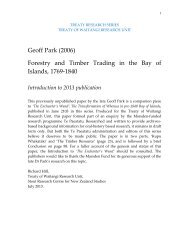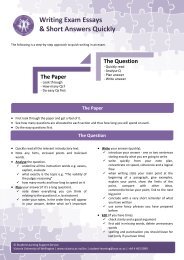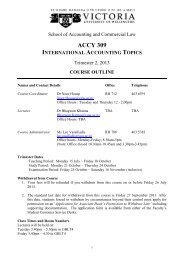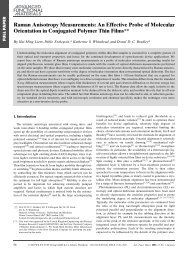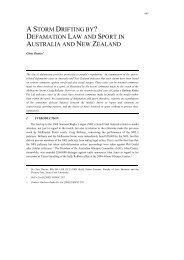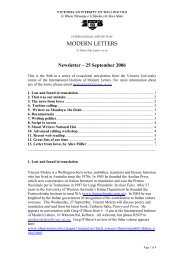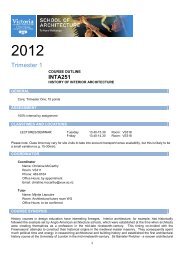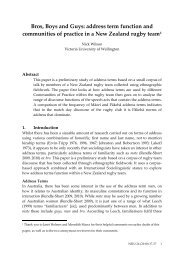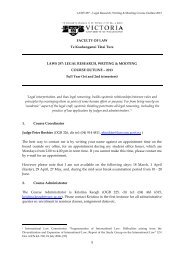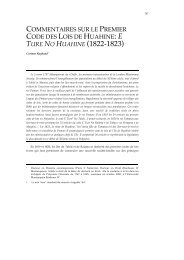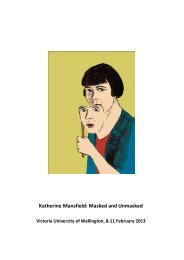dilute NaOH solution is added to a pale
dilute NaOH solution is added to a pale
dilute NaOH solution is added to a pale
Create successful ePaper yourself
Turn your PDF publications into a flip-book with our unique Google optimized e-Paper software.
A blue precipitate appears when two drops of<br />
<strong>dilute</strong> <strong>NaOH</strong> <strong>solution</strong> <strong>is</strong> <strong>added</strong> <strong>to</strong> a blue <strong>solution</strong>.<br />
Name the ion present.<br />
Give the formula for the precipitate.<br />
An orange/brown precipitate appears when two<br />
drops of <strong>dilute</strong> <strong>NaOH</strong> <strong>solution</strong> <strong>is</strong> <strong>added</strong> <strong>to</strong> an<br />
orange <strong>solution</strong>.<br />
Name the ion present.<br />
Give the formula for the precipitate.<br />
No precipitate appears when two drops of <strong>dilute</strong><br />
<strong>NaOH</strong> <strong>solution</strong> <strong>is</strong> <strong>added</strong> <strong>to</strong> a colourless <strong>solution</strong>.<br />
More <strong>NaOH</strong> <strong>is</strong> <strong>added</strong> and when heated the gas<br />
emitted turns red litmus paper blue.<br />
Name the ion present.<br />
Give its formula.<br />
A green precipitate appears when two drops of<br />
<strong>dilute</strong> <strong>NaOH</strong> <strong>solution</strong> <strong>is</strong> <strong>added</strong> <strong>to</strong> a <strong>pale</strong> green<br />
<strong>solution</strong>.<br />
Name the ion present.<br />
Give the formula for the precipitate.
A brown/grey precipitate appears when two<br />
drops of <strong>dilute</strong> <strong>NaOH</strong> <strong>solution</strong> <strong>is</strong> <strong>added</strong> <strong>to</strong> a<br />
colourless <strong>solution</strong>.<br />
Name the ion present.<br />
Give the formula for the precipitate.<br />
When excess <strong>NaOH</strong> <strong>solution</strong> <strong>is</strong> <strong>added</strong> <strong>to</strong> a<br />
white precipitate formed by two drops of<br />
<strong>NaOH</strong>, the precipitate remains.<br />
What are the possible ions present?<br />
What are the formulae for these ions?<br />
No precipitate appears when two drops of<br />
<strong>dilute</strong> <strong>NaOH</strong> <strong>solution</strong> <strong>is</strong> <strong>added</strong> <strong>to</strong> a colourless<br />
<strong>solution</strong>. More <strong>NaOH</strong> <strong>is</strong> <strong>added</strong> and when<br />
heated the gas emitted does not change the<br />
colour of red litmus paper.<br />
What <strong>is</strong> the ion present?<br />
A white precipitate of a metal <strong>is</strong> a<br />
hydroxide. The precipitate d<strong>is</strong>appears when<br />
excess <strong>NaOH</strong> <strong>added</strong>. It also d<strong>is</strong>appears when<br />
excess ammonia <strong>is</strong> <strong>added</strong>.<br />
Name the ion present.<br />
Give the formula for the precipitate.
A white precipitate of th<strong>is</strong> ion does not red<strong>is</strong>solve<br />
in excess <strong>NaOH</strong>. When <strong>dilute</strong> sulfuric acid <strong>is</strong><br />
<strong>added</strong> <strong>to</strong> the original <strong>solution</strong>, a white precipitate<br />
forms.<br />
Name the ion.<br />
Give the formulae for the first AND the second<br />
precipitates.<br />
A white precipitate of th<strong>is</strong> ion red<strong>is</strong>solves in<br />
excess <strong>NaOH</strong>. When excess <strong>dilute</strong> ammonia<br />
<strong>solution</strong> <strong>is</strong> <strong>added</strong> <strong>to</strong> the original <strong>solution</strong>, a white<br />
precipitate forms and remains. When <strong>dilute</strong><br />
sulfuric acid <strong>is</strong> <strong>added</strong> <strong>to</strong> the original <strong>solution</strong> no<br />
precipitate <strong>is</strong> seen.<br />
Name the ion present.<br />
Give the formula for the first and second precipitate.<br />
A white precipitate of th<strong>is</strong> ion does not red<strong>is</strong>solve<br />
in excess <strong>NaOH</strong>. When <strong>dilute</strong> sulfuric acid <strong>is</strong><br />
<strong>added</strong> <strong>to</strong> the original <strong>solution</strong>, the <strong>solution</strong><br />
remains colourless.<br />
Name the ion present.<br />
Give the formula for the precipitate.<br />
A white precipitate of th<strong>is</strong> ion red<strong>is</strong>solves in<br />
excess <strong>NaOH</strong>. When excess <strong>dilute</strong> ammonia<br />
<strong>solution</strong> <strong>is</strong> <strong>added</strong> <strong>to</strong> the original <strong>solution</strong>, a white<br />
precipitate forms and remains. When <strong>dilute</strong><br />
sulfuric acid <strong>is</strong> <strong>added</strong> <strong>to</strong> the original <strong>solution</strong>, a<br />
white precipitate forms.<br />
Name the ion.<br />
Give the formulae for the first, second AND the<br />
third precipitates.
A <strong>solution</strong> turns red litmus paper blue. When<br />
<strong>dilute</strong> HCl <strong>is</strong> <strong>added</strong> bubbles of gas are observed.<br />
Name the ion.<br />
Name the gas.<br />
A <strong>solution</strong> doesn’t change the colour of red litmus<br />
paper. When barium nitrate <strong>is</strong> <strong>added</strong> a white<br />
precipitate forms.<br />
Name the ion.<br />
Give the formula for the precipitate.<br />
A <strong>solution</strong> turns red litmus paper blue. When<br />
<strong>dilute</strong> HCl <strong>is</strong> <strong>added</strong> no precipitate or gas <strong>is</strong> seen.<br />
Name the ion.<br />
A <strong>solution</strong> doesn’t change the colour of red litmus<br />
paper. When barium nitrate <strong>is</strong> <strong>added</strong> no<br />
precipitate forms. When silver nitrate <strong>is</strong> <strong>added</strong> <strong>to</strong><br />
a new <strong>solution</strong>, no precipitate <strong>is</strong> formed.<br />
Name the ion.
A <strong>solution</strong> doesn’t change the colour of red litmus<br />
paper. When barium nitrate <strong>is</strong> <strong>added</strong> no<br />
precipitate forms. When silver nitrate <strong>is</strong> <strong>added</strong> <strong>to</strong><br />
a new <strong>solution</strong>, a precipitate <strong>is</strong> formed. Th<strong>is</strong><br />
precipitate d<strong>is</strong>appears when excess ammonia <strong>is</strong><br />
<strong>added</strong>.<br />
Name the ion.<br />
Give the formula for the precipitate.<br />
A <strong>solution</strong> doesn’t change the colour of red litmus<br />
paper. When barium nitrate <strong>is</strong> <strong>added</strong> no<br />
precipitate forms. When silver nitrate <strong>is</strong> <strong>added</strong> <strong>to</strong><br />
a new <strong>solution</strong>, a precipitate <strong>is</strong> formed. Th<strong>is</strong><br />
precipitate remains when excess ammonia <strong>is</strong><br />
<strong>added</strong>.<br />
Name the ion present.<br />
Give the formula for the precipitate.<br />
What <strong>is</strong> the formula for the sulfate ion? What <strong>is</strong> the formula for the nitrate ion?
What <strong>is</strong> the formula for the chloride ion? What <strong>is</strong> the formula for the hydroxide ion?<br />
What <strong>is</strong> the formula for the carbonate ion? What <strong>is</strong> the formula of the ammonium ion?
A blue precipitate appears when two drops of<br />
<strong>dilute</strong> <strong>NaOH</strong> <strong>solution</strong> <strong>is</strong> <strong>added</strong> <strong>to</strong> a blue <strong>solution</strong>.<br />
Write the ionic equation for the formation of the<br />
precipitate.<br />
An orange/brown precipitate appears when two<br />
drops of <strong>dilute</strong> <strong>NaOH</strong> <strong>solution</strong> <strong>is</strong> <strong>added</strong> <strong>to</strong> an<br />
orange <strong>solution</strong>.<br />
Write the ionic equation for the formation of the<br />
precipitate.<br />
A green<strong>is</strong>h precipitate appears when two drops of<br />
<strong>dilute</strong> <strong>NaOH</strong> <strong>solution</strong> <strong>is</strong> <strong>added</strong> <strong>to</strong> a <strong>pale</strong> green<br />
<strong>solution</strong>.<br />
Write the ionic equation for the formation of the<br />
precipitate.
A brown/grey precipitate appears when two<br />
drops of <strong>dilute</strong> <strong>NaOH</strong> <strong>solution</strong> <strong>is</strong> <strong>added</strong> <strong>to</strong> a<br />
colourless <strong>solution</strong>.<br />
Write the ionic equation for the formation of the<br />
precipitate.<br />
When excess <strong>NaOH</strong> <strong>solution</strong> <strong>is</strong> <strong>added</strong> <strong>to</strong> a<br />
white precipitate formed by two drops of<br />
<strong>NaOH</strong>, the precipitate remains.<br />
Write the ionic equations for the formation of all<br />
of the possible precipitates.<br />
A white precipitate which <strong>is</strong> a hydroxide<br />
d<strong>is</strong>appears in excess <strong>NaOH</strong>, and also when<br />
excess ammonia <strong>is</strong> <strong>added</strong>.<br />
Write the ionic equation for the formation of the<br />
precipitate.
A white precipitate of an ion does not red<strong>is</strong>solve<br />
in excess <strong>NaOH</strong>. When <strong>dilute</strong> sulfuric acid <strong>is</strong><br />
<strong>added</strong> <strong>to</strong> the original <strong>solution</strong>, a white precipitate<br />
forms.<br />
Write the ionic equations for the formation of the<br />
precipitates.<br />
A white precipitate of th<strong>is</strong> ion red<strong>is</strong>solves in<br />
excess <strong>NaOH</strong>. When excess <strong>dilute</strong> ammonia<br />
<strong>solution</strong> <strong>is</strong> <strong>added</strong> <strong>to</strong> the original <strong>solution</strong>, a white<br />
precipitate also forms and remains. When <strong>dilute</strong><br />
sulfuric acid <strong>is</strong> <strong>added</strong> <strong>to</strong> the original <strong>solution</strong> no<br />
precipitate <strong>is</strong> seen.<br />
Write the ionic equations for the formation of the<br />
precipitates.<br />
A white precipitate of th<strong>is</strong> ion does not red<strong>is</strong>solve<br />
in excess <strong>NaOH</strong>. When <strong>dilute</strong> sulfuric acid <strong>is</strong><br />
<strong>added</strong> <strong>to</strong> the original <strong>solution</strong>, the <strong>solution</strong><br />
remains colourless.<br />
Write the ionic equation for the formation of the<br />
precipitate.<br />
A white precipitate of an ion red<strong>is</strong>solves in excess<br />
<strong>NaOH</strong>. When excess <strong>dilute</strong> ammonia <strong>solution</strong> <strong>is</strong><br />
<strong>added</strong> <strong>to</strong> the original <strong>solution</strong>, a white precipitate<br />
forms and remains. When <strong>dilute</strong> sulfuric acid <strong>is</strong><br />
<strong>added</strong> <strong>to</strong> the original <strong>solution</strong>, a white precipitate<br />
forms.<br />
Write the ionic equations for the formation of the<br />
precipitates.
Solution doesn’t change the colour of red litmus<br />
paper. When barium nitrate <strong>solution</strong> <strong>is</strong> <strong>added</strong> <strong>to</strong> it<br />
a white precipitate forms.<br />
Write the ionic equation for the formation of the<br />
precipitate.<br />
A <strong>solution</strong> doesn’t change the colour of red litmus<br />
paper. When barium nitrate <strong>is</strong> <strong>added</strong> no<br />
precipitate forms. When silver nitrate <strong>solution</strong> <strong>is</strong><br />
<strong>added</strong> <strong>to</strong> the original <strong>solution</strong>, a white precipitate<br />
forms, which d<strong>is</strong>solves in excess ammonia<br />
<strong>solution</strong>.<br />
Write the ionic equation for the formation of the<br />
precipitate.<br />
A <strong>solution</strong> doesn’t change the colour of red litmus<br />
paper. When barium nitrate <strong>is</strong> <strong>added</strong> no<br />
precipitate forms. When silver nitrate <strong>solution</strong> <strong>is</strong><br />
<strong>added</strong> <strong>to</strong> the original <strong>solution</strong>, a white precipitate<br />
forms, which does not d<strong>is</strong>solve in excess ammonia<br />
<strong>solution</strong>.<br />
Write the ionic equation for the formation of the<br />
precipitate.
A white precipitate which <strong>is</strong> a hydroxide<br />
d<strong>is</strong>appears in excess <strong>NaOH</strong>, and also when excess<br />
ammonia <strong>is</strong> <strong>added</strong> <strong>to</strong> the original <strong>solution</strong>.<br />
Write the ionic equation for both of the<br />
d<strong>is</strong><strong>solution</strong> reactions.<br />
A <strong>solution</strong> doesn’t change the colour of red litmus<br />
paper. When barium nitrate <strong>is</strong> <strong>added</strong> no<br />
precipitate forms. When silver nitrate <strong>is</strong> <strong>added</strong> <strong>to</strong><br />
a new <strong>solution</strong>, a precipitate <strong>is</strong> formed. Th<strong>is</strong><br />
precipitate d<strong>is</strong>appears when excess ammonia <strong>is</strong><br />
<strong>added</strong>.<br />
Write the ionic equation for the d<strong>is</strong><strong>solution</strong> of the<br />
precipitate.<br />
A white precipitate of th<strong>is</strong> ion red<strong>is</strong>solves in<br />
excess <strong>NaOH</strong>. When excess <strong>dilute</strong> ammonia<br />
<strong>solution</strong> <strong>is</strong> <strong>added</strong> <strong>to</strong> the original <strong>solution</strong>, a white<br />
precipitate forms and remains. When <strong>dilute</strong><br />
sulfuric acid <strong>is</strong> <strong>added</strong> <strong>to</strong> the original <strong>solution</strong> no<br />
precipitate <strong>is</strong> seen.<br />
Write the ionic equations for the d<strong>is</strong><strong>solution</strong> of<br />
the precipitate.<br />
A blue precipitate formed when two drops of<br />
ammonia <strong>is</strong> <strong>added</strong> <strong>to</strong> a blue <strong>solution</strong>. The<br />
precipitate red<strong>is</strong>solves in excess ammonia<br />
<strong>solution</strong>.<br />
Write the equations for both reactions observed.
No precipitate appears when two drops of <strong>dilute</strong><br />
<strong>NaOH</strong> <strong>solution</strong> <strong>is</strong> <strong>added</strong> <strong>to</strong> a clear <strong>solution</strong>. More<br />
<strong>NaOH</strong> <strong>is</strong> <strong>added</strong> and when heated the gas emitted<br />
turns red litmus paper blue.<br />
What <strong>is</strong> the gas produced?<br />
Write an equation for the production of the gas.<br />
An orange <strong>solution</strong> produces an orange/brown<br />
precipitate when <strong>dilute</strong> sodium hydroxide <strong>solution</strong><br />
<strong>is</strong> <strong>added</strong>. If a <strong>solution</strong> of potassium thiocyanate <strong>is</strong><br />
<strong>added</strong> <strong>to</strong> the original <strong>solution</strong>, a dark red <strong>solution</strong><br />
<strong>is</strong> formed.<br />
Name the ion present.<br />
Give the equations for the production of the<br />
precipitate and the red compound.<br />
A <strong>solution</strong> turns red litmus paper blue. When<br />
<strong>dilute</strong> HCl <strong>is</strong> <strong>added</strong> bubbles of gas are observed.<br />
Write an equation which shows which gas <strong>is</strong><br />
produced.<br />
An orange <strong>solution</strong> produces an orange/brown<br />
precipitate when <strong>dilute</strong> sodium hydroxide <strong>solution</strong><br />
<strong>is</strong> <strong>added</strong>. If a <strong>solution</strong> of potassium thiocyanate <strong>is</strong><br />
<strong>added</strong> <strong>to</strong> the original <strong>solution</strong>, a dark red <strong>solution</strong><br />
<strong>is</strong> formed.<br />
Name the ion present.<br />
Give the equations for the production of the<br />
precipitate and the red compound.



